Peony Carol
Flowers that combine magnificent colors and heady aroma - what could be better for a green corner, where you can think, relax your soul and enjoy harmony with nature? These are the peonies, revered by many peoples along with the magnificent beauties of roses. The brightest representative of this group of plants is the Carol hybrid. Its wonderful inflorescences conquer everyone, without exception, at first sight.
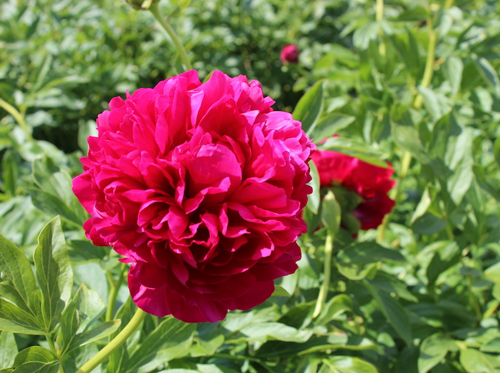
History of origin
It is an overseas variety developed in the United States by Bockstoce. He became known to the world in the middle of the last century, having been on sale since 1955. Thirteen years later, the decorative and blooming culture won the highest award of the American Peony Society, referred to as the Grand Champion or Best in Show, at the annual National Peony Show. In Russia, Carol has repeatedly become the champion of exhibitions of the Moscow Flower Club "Moscow Flower Growers" from 1980 to 1998.
Description of the variety
The noble plant belongs to the milky-flowered group and is a herbaceous variety. Carol catches the eye with large, up to 16 cm in diameter, heavy double flowers with shiny red petals. The rosy shape adds charm to the luxurious inflorescence. In its middle, high, folded, tightly packed petals are collected in such a way that they form several tops. The color of the flower is perfectly even and does not fade in the sun. However, the petals can please the eye with a slight lilac tint. Amazing buds appear on the plant quite early, in early June, and open slowly, which makes it possible to admire them at different stages of dissolution. Peony flowers have a light, pleasant aroma.
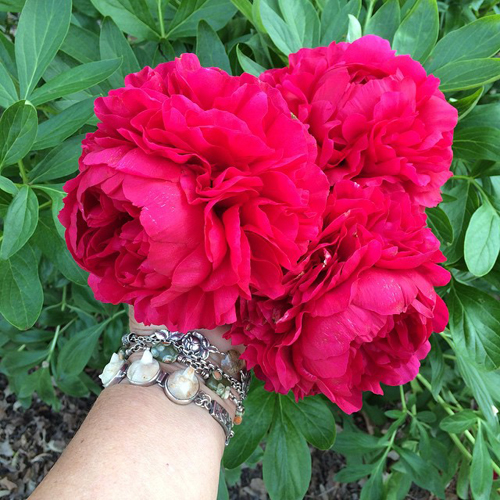
The culture itself looks like a sprawling bush with a height of 80 to 90 cm. Carol's shoots, unfortunately, do not differ in strength. By nature and due to the formation of weighty inflorescences, the stems of the plant are equipped with bends, and this is a significant disadvantage of this variety, because it increases the risk of lodging and even breaking off the shoots. To avoid this trouble, ornamental shrubs should be provided with rigid support. The stems can be tied up during flowering, usually lush and abundant. Dense, dark green openwork foliage remains on the plant until late autumn, with the end of the summer heat, changing its previous color to crimson tones.
The Carol variety is a winter-hardy and hardy hybrid. It does not need shelter for the winter and, with proper care, is rarely damaged by both pests and fungal diseases. In one place, a peony is able to live for more than one decade.
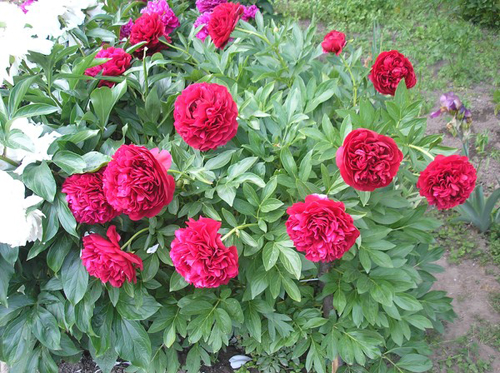
Agrotechnical features
American beauty Carol grows best in loose, fertile soil with a neutral reaction. It can be safely placed on an area bathed in the sun - this will not damage the decorative effect of the shrub. However, the best option is to land Carol where there will be light partial shade in the midday hours of summer days. During planting, it is not recommended to deepen the plant too deep into the ground, otherwise the likelihood of the onset of the flowering period of the bush will decrease.
A luxurious flower needs regular moistening of the soil under it, but watering should be done in moderation. In case of stagnation of moisture in the substrate, root decay may begin, and you will lose the plant. It is enough to water the peony once a week, while spending up to 3 liters of settled water per adult bush. After each such procedure, it is required to loosen the soil under the flower.
As for dressings, Carol needs them already at the beginning of the growing season, that is, from spring. The plant is watered with an aqueous solution of urea.In total, this is done three times per season, once every 20 days. The second and third procedures require additional use of micronutrient fertilizers in tablets. When Carol has faded, it should be fed with a multi-purpose concentrate. With the onset of autumn frosts, the peony must be cut at the root and mulched with compost.
Use cases
The Carol variety is able to create a magical atmosphere in any flower garden or garden, if you place it in group, single plantings, make it the central figure of a voluminous, bright flower bed. In addition, chic bushes of this plant can be planted near the wall of the house, thus decorating the facade of the dwelling; or in the form of a hedge. The culture is excellent in cutting, as its flowers and buds retain their fresh appearance for a long time. It is advisable to cut it early in the morning in dry weather.
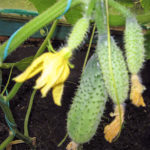

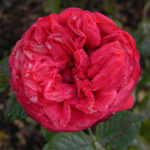






The color of these peonies is simply amazing: bright, dark red, even burgundy. Depending on the lighting, the shade depth changes. I planted one bush in partial shade and another in the sun. In partial shade, the color is much more effective. In the sun, they still fade and fade much faster. I cover with cut leaves for the winter. They hibernate well.
Carol's peony is perhaps the very first flower that I planted in my flower garden. Many years ago, having no experience in growing it, I planted it too deep. The bush did not bloom for several seasons, but only increased the green mass. What have I not done! She sheltered it for the winter (I thought that due to the fact that it was cold in winter, it did not bloom), fertilized it several times, transplanted it from place to place, even watered it in the summer! But alas, they did not bloom. A friend, who has a whole alley of peonies, helped to correct the situation. It was she who suggested how to plant the bush correctly. The main thing is to guess with the planting depth, and put a little humus in the hole (I give overripe manure), and your peonies will give flowers even in the shade. Of course, they will not be as bright as in a bright place, but they will bloom. Now I also have my own peony alley. After all, they grow beautifully, which makes it possible, by dividing the root, to get new plants.